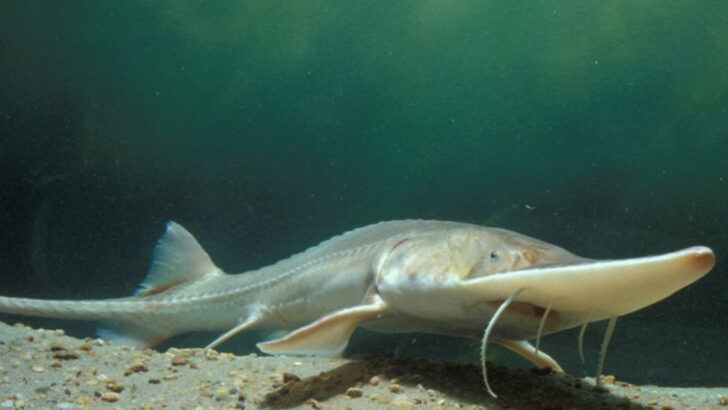They’re older than dinosaurs—and still swimming among us.
Sturgeons are living relics, armored giants that have ruled rivers since the time of T. rex. With their bony plates and strange, prehistoric grace, they look more like aquatic dragons than modern fish.
But don’t let their age fool you. These creatures are anything but invincible. While some grow longer than a pickup truck, many are now disappearing fast—caught in the crossfire of dams, pollution, and overfishing.
In this post, we spotlight ten sturgeon species still found in American rivers today. Some are massive. Some are mysterious. Some are barely hanging on.
Each has a story, and some are racing against time.
Ready to meet the river’s oldest survivors—and find out which ones are in serious trouble?
Atlantic Sturgeon

Considered one of the largest fish in North American waters, the Atlantic Sturgeon can grow up to 14 feet long. Known for its bony plates and long snout, this species is a marvel of nature.
Unfortunately, overfishing and habitat loss have led to its decline. In recent years, conservation efforts have been put in place to help recover their numbers. Endangered in many areas, this sturgeon is a symbol of ancient aquatic life.
Its presence in rivers like the Hudson is a reminder of the delicate balance required to maintain aquatic ecosystems.
Shortnose Sturgeon
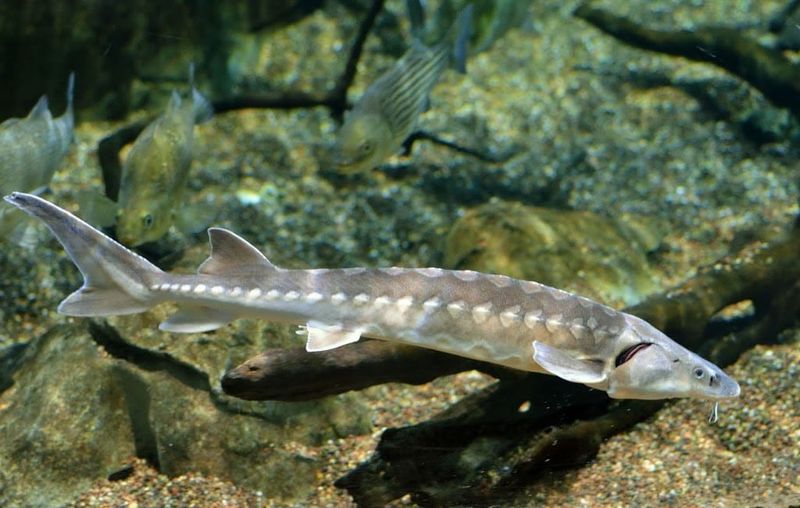
The Shortnose Sturgeon is often overshadowed by its larger relatives but remains a significant part of the river ecosystems. With a compact body and shorter snout, this species has adapted well to various environments.
Despite its resilience, it faces threats from pollution and river damming. Listed as endangered, efforts continue to monitor and improve its habitat.
With an average length of three to five feet, the Shortnose Sturgeon serves as a testament to survival against the odds, showcasing nature’s ability to adapt.
Lake Sturgeon

With a lineage tracing back to the time of the dinosaurs, the Lake Sturgeon is truly a living fossil. Its elongated body and whisker-like barbels make it easily recognizable.
This species thrives in the Great Lakes and surrounding rivers. Despite being classified as of least concern, local populations have been impacted by overfishing and pollution.
Conservationists have worked tirelessly to ensure its survival. The Lake Sturgeon is a symbol of strength and resilience, maintaining its place in the tapestry of aquatic life.
White Sturgeon
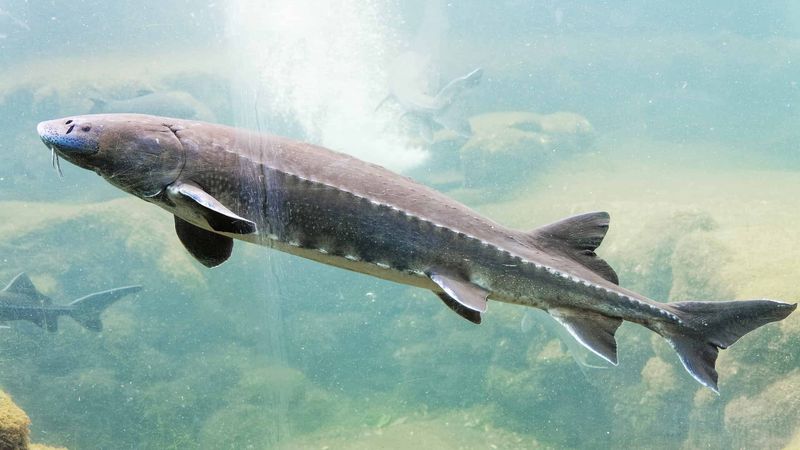
Imagine encountering a fish that can live for a century and grow to the size of a small car. The White Sturgeon, native to the Pacific coast, claims this impressive status.
Known for its longevity and size, it plays a crucial role in its ecosystem. Unfortunately, its numbers have dwindled due to overfishing and habitat alteration. Conservation initiatives are underway to protect this colossal species.
As the largest freshwater fish in North America, the White Sturgeon embodies the extraordinary diversity of aquatic life.
Pallid Sturgeon
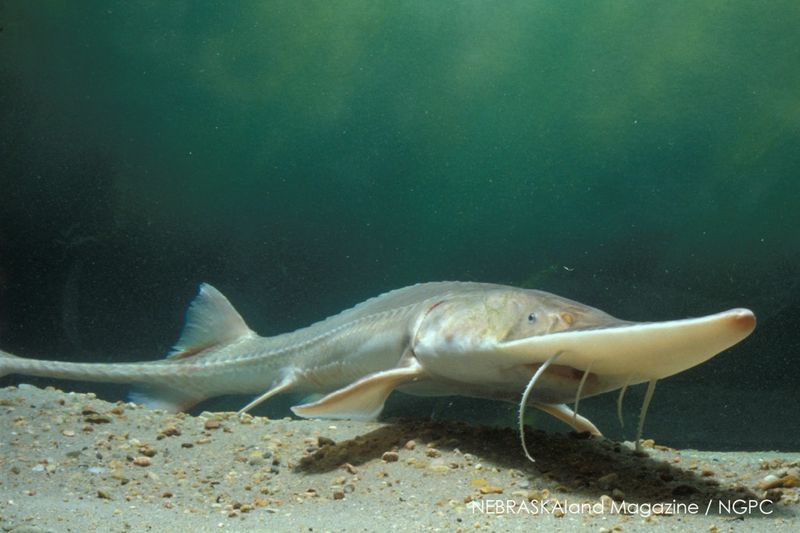
The Pallid Sturgeon, with its pale complexion and unique flattened snout, is a distinctive inhabitant of the Missouri River. This elusive creature is critically endangered, facing threats from habitat destruction and river modifications.
Efforts to breed and reintroduce this species into its native habitat are ongoing. The Pallid Sturgeon’s survival is a race against time, highlighting the urgency needed in conservation practices.
It serves as a reminder of the interconnectedness of nature and the responsibility to protect it.
Shovelnose Sturgeon
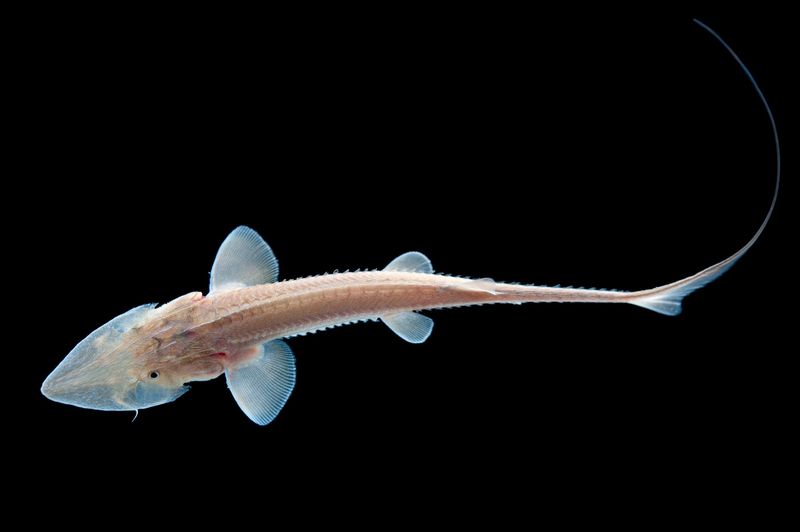
With a snout resembling a shovel, the Shovelnose Sturgeon is aptly named. Found primarily in the Mississippi River, it is the smallest of the North American sturgeons.
This species is not currently listed as endangered, but it faces challenges from habitat changes and pollution. Conservationists monitor its populations to ensure they remain stable.
The Shovelnose Sturgeon plays a vital role in its ecosystem, contributing to the ecological diversity of the river. Its presence is a testament to the rich biodiversity found in American waterways.
Green Sturgeon
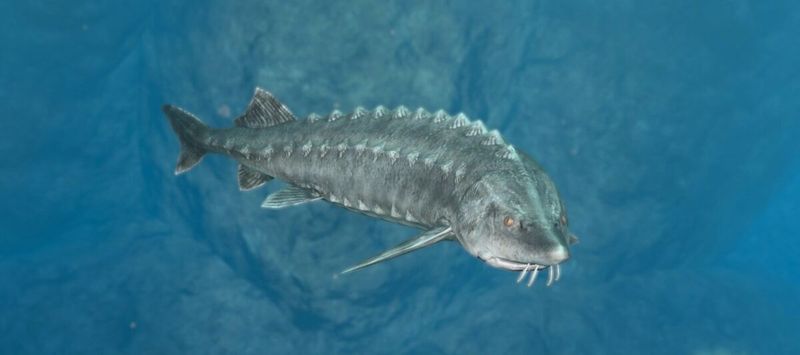
Distinct with its olive-green hue, the Green Sturgeon navigates both freshwater and marine environments. This species is known for its migratory patterns, traveling long distances along the Pacific coast.
Though not universally endangered, certain populations are threatened by overfishing and habitat disruption. Conservation measures are focused on protecting its migratory paths.
The Green Sturgeon’s journey through diverse habitats highlights the interconnected nature of aquatic life and the need for sustainable practices.
Sakhalin Sturgeon
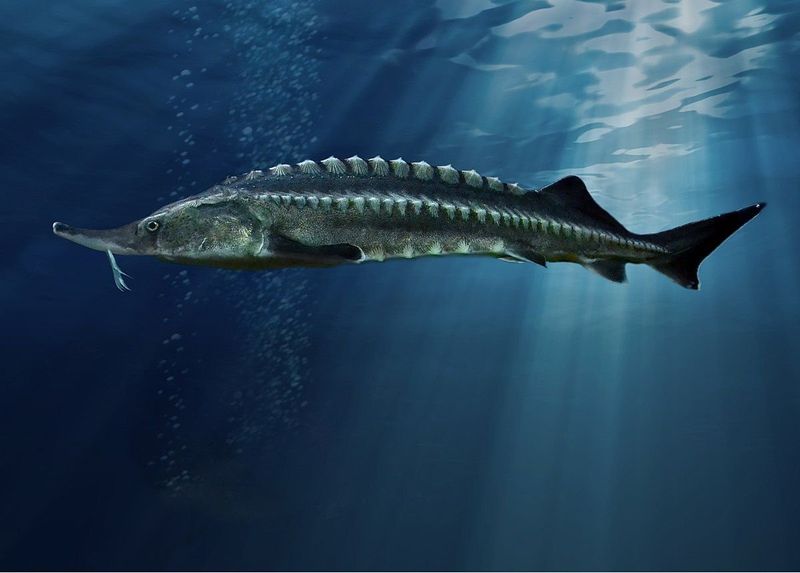
The Sakhalin Sturgeon, an impressive species with a lineage dating back millions of years, offers a glimpse into aquatic history. Known for its elongated body and distinctive long snout, it thrives in the cold waters of northeastern rivers.
Despite its impressive adaptability, this sturgeon faces threats from habitat loss and overfishing. Conservation efforts focus on habitat restoration and strict fishing regulations.
Did you know? The Sakhalin Sturgeon has been a vital part of indigenous cultures, often symbolizing strength and resilience.
Gulf Sturgeon
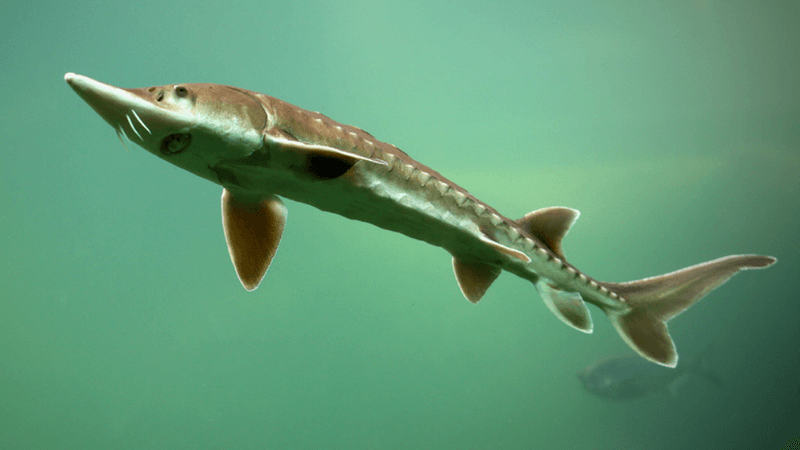
Leaping from the brackish waters where river meets sea, the Gulf Sturgeon is a spectacle of nature. Known for its size and agility, this species has adapted to both fresh and saltwater environments.
Currently listed as threatened, the Gulf Sturgeon faces challenges from habitat changes and pollution. Conservation efforts are crucial to its survival.
As one of the more adaptable sturgeon species, it serves as a reminder of the delicate balance between different ecosystems and the impact of human activity.
Kaluga Sturgeon
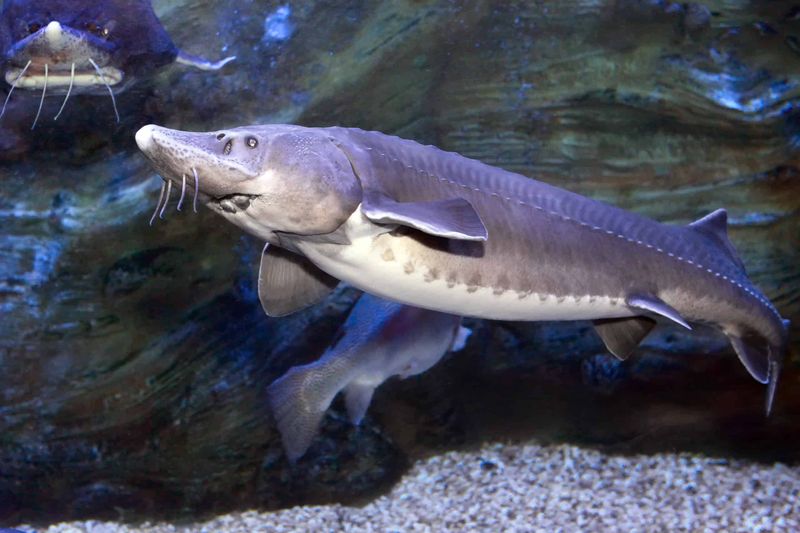
Known as the “River Beluga,” the Kaluga Sturgeon is one of the largest freshwater fish. Its formidable presence in the river is both a sight to behold and a conservation concern.
This sturgeon is severely endangered due to overfishing and habitat degradation. Conservation programs aim to restore populations through breeding and habitat protection.
A fascinating fact about the Kaluga Sturgeon is its ability to live over 80 years, embodying the timelessness of river ecosystems.

